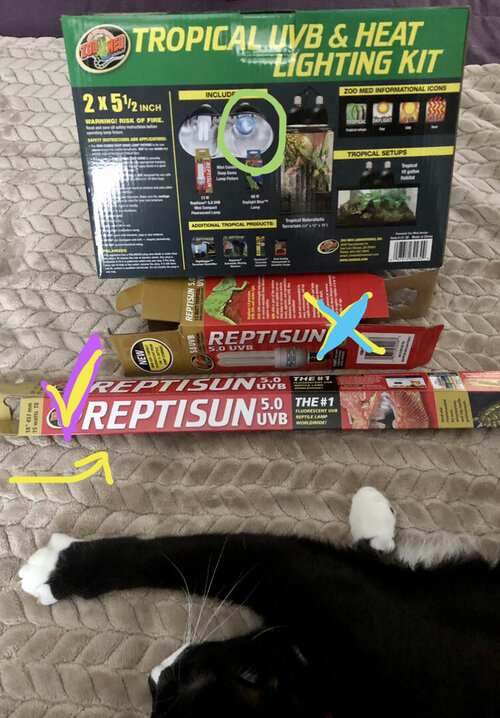Camo101
New Member
This is the first time we’ve owned a chameleon and we got it from Pet Smart as a juvenile. His name is Camo and everything was fine until a few weeks ago he had these symptoms: Eyes shut during day, sneezing and contortion of body and the mouth would stay open a little along with a poor appetite. This was after it shed which went okay. So we decided to take it to the vet. He almost got better himself and the vet said he was fine and that if it had anything then it worked it out itself. However one symptom didn’t stop which has been the eyes being closed. So we also started controlling the amount of vitamin and calcium dust we had given him. Could anyone give dusting recommendations for a juvenile veiled? The Vet said that it was around 13 weeks old. He has 12 hours of light which is a 50w Repti Basking Spot Lamp and a Reptisun 5.0 UVB about 10 inches from the top of the cage. His basking spot is usually 85 and the humidity is always 50-60. We hand mist and also have a Monson Solo II. I am also growing pothouse plants organically for him.It’s a screen mesh cage 3’ by 16” by 16”. With paper towels at the bottom. He only eats one too three crickets a day. I have seen people say 7-10 a day but with countless effort he refuses to eat after the few he does. He also does drink well and often. Could it be malnourished? Also his eyes still will shut during the day from time to time or they will squint. The vet said our first basking bulb light was not good to use I will attach an image of it. Could his eyes just be damaged now?  It did come with the Chameleon kit we bought. Also on top of the eye issue he just today started to sit vertical with his mouth gaped a little bit. I will attach images. Thanks! (We might go to the vet again soon if nothing improves)
It did come with the Chameleon kit we bought. Also on top of the eye issue he just today started to sit vertical with his mouth gaped a little bit. I will attach images. Thanks! (We might go to the vet again soon if nothing improves)
Attachments
-
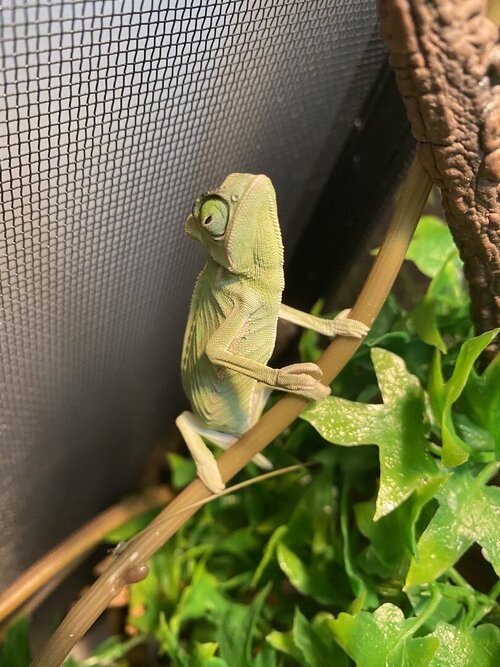 FD00F312-85B6-4162-863C-B9E30239AFCA.jpeg185.4 KB · Views: 202
FD00F312-85B6-4162-863C-B9E30239AFCA.jpeg185.4 KB · Views: 202 -
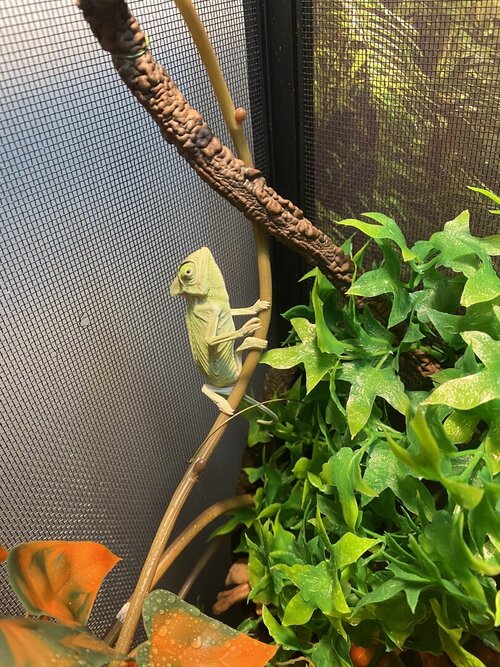 519F59C4-8EDC-437E-8C77-88C51FFD3CF9.jpeg324.4 KB · Views: 209
519F59C4-8EDC-437E-8C77-88C51FFD3CF9.jpeg324.4 KB · Views: 209 -
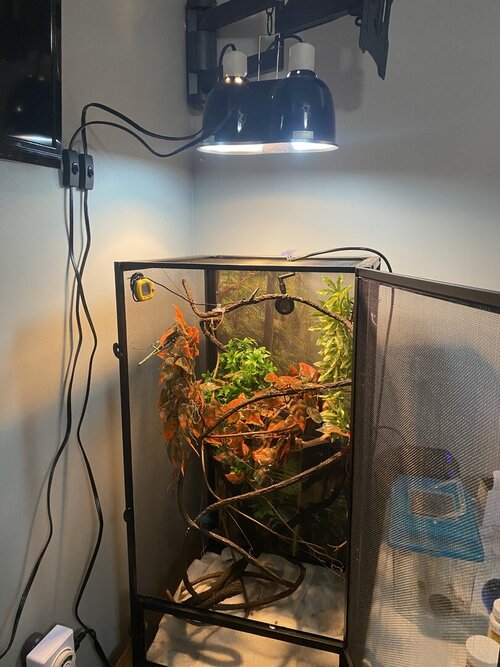 E7593ADF-5168-42B1-B346-10FB56CDC3E1.jpeg181 KB · Views: 192
E7593ADF-5168-42B1-B346-10FB56CDC3E1.jpeg181 KB · Views: 192 -
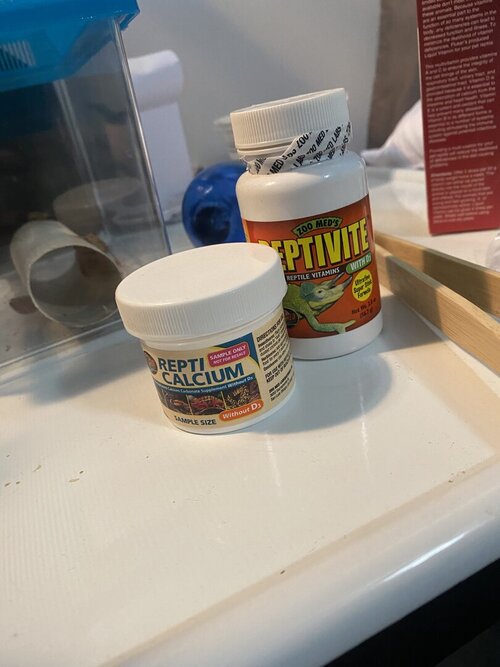 7F5F6237-BD80-4896-B65F-FE24D62CB186.jpeg105.7 KB · Views: 188
7F5F6237-BD80-4896-B65F-FE24D62CB186.jpeg105.7 KB · Views: 188 -
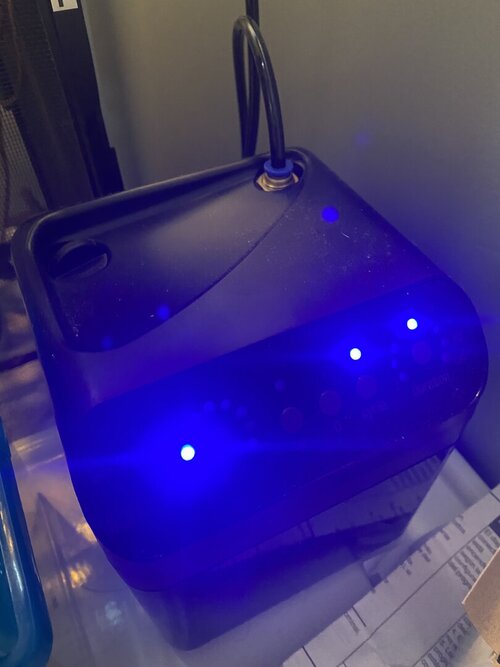 E7DC173F-2B19-4C01-9128-B06F44A03E8A.jpeg69.4 KB · Views: 175
E7DC173F-2B19-4C01-9128-B06F44A03E8A.jpeg69.4 KB · Views: 175 -
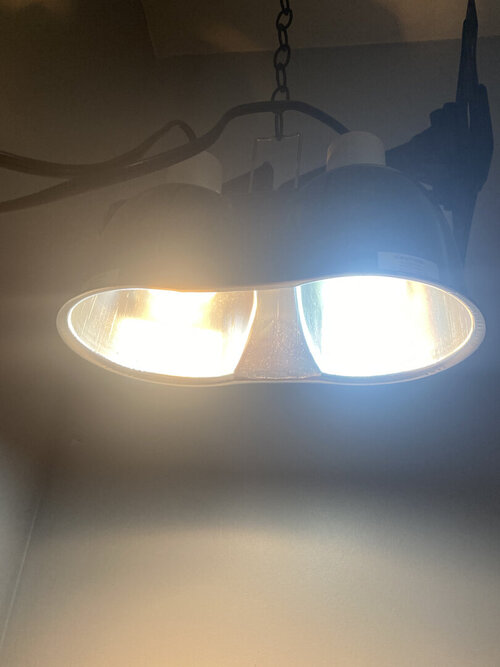 2FFBC456-0345-4C09-9D3F-4017F9C5C2EA.jpeg71.3 KB · Views: 183
2FFBC456-0345-4C09-9D3F-4017F9C5C2EA.jpeg71.3 KB · Views: 183 -
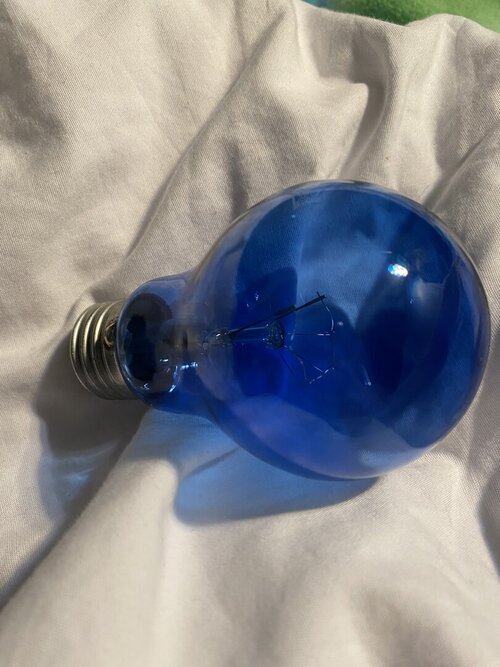 40E37468-D7A9-4503-A8E8-A2833A76040D.jpeg154.7 KB · Views: 194
40E37468-D7A9-4503-A8E8-A2833A76040D.jpeg154.7 KB · Views: 194







